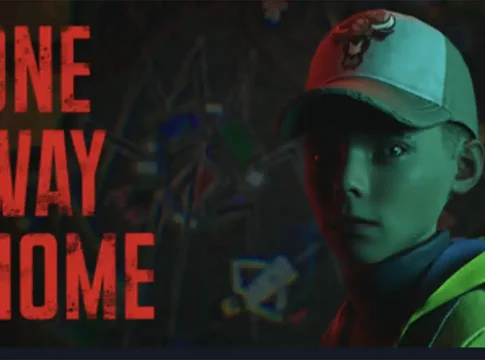Unearthing Childhood Fears: The Chilling Charm of One Way Home
In the world of video games, few things resonate as deeply as the primal terrors lurking within our childhood memories. Dive into One Way Home, and you’ll find a meticulously crafted experience that encapsulates the lurking dread of youth—where safety is a thin veil, and the familiar can turn sinister in an instant.
A Disturbing Transformation
Meet Jimmy Taylor, a twelve-year-old whose world flips upside down after a bus crash. When he wakes up, his once-beloved hometown has morphed into a shadowy nightmare. It’s not just about creepy streets; it’s the kind of purgatory that evokes the timeless horror of feeling lost between reality and a waking dream—a space where trauma hangs heavy.
This isn’t just any horror story. One Way Home taps into a rich tradition rooted in American literature and film. Think of C.S. Lewis’ The Lion, the Witch and the Wardrobe, where children escape reality through magical doors. But here, the door leads to a world that feels hauntingly familiar yet drastically altered. Picture M. Night Shyamalan’s The Sixth Sense, where near-death experiences create a stasis filled with unresolved fears. The common thread? Childhood trauma that morphs the very geography of safety.
The Hometown Gothic Tradition
What sets One Way Home apart is its homage to the genre’s quintessential features. Popularized by master storyteller Stephen King, particularly in his portrayal of Derry, Maine, the small-town vibe serves as both sanctuary and sinister backdrop. In this universe, the police cars and streetlights shift from protective figures to looming threats. It’s a striking visual representation of how trauma can redefine familiar spaces.
Mechanics of Fear
Where this game excels is in its innovative mechanics, flipping typical childhood notions of safety on their heads. In Jimmy’s world, darkness isn’t the enemy; it’s a refuge. Instead, the glowing streetlights that should symbolize safety become danger zones, embodying the real-life hypervigilance of trauma survivors.
Players navigating the game will find themselves strategically hiding and running rather than battling monsters head-on. It’s a cleverly poignant touch that mirrors the resourcefulness of childhood. It sparks a reflection on how kids adapt when their safety nets fade away.
A Complex Take on Growing Up Scared
But hold on, the narrative doesn’t just drop players into a singular experience of fear. One Way Home offers branching paths that reflect the complexity of childhood trauma, showcasing how these experiences shape us in multifaceted ways. It gives players the chance to explore different life paths—the Sage, the Innocent, and the Explorer—each sculpting Jimmy’s character and his emotional evolution.
Against the backdrop of his eerie hometown, Jimmy’s journey becomes a vivid narrative experience. Childhood drawings come to life with profound emotional weight, hinting at the fears that haunt him, while his voiced reactions deepen the connection between player and character.
A Subtle Evolution
While One Way Home doesn’t attempt to reinvent the wheel, it’s a testament to the evolving landscape of childhood horror. It honors the genre’s roots while adding layers that encourage players to confront and process their own nuanced fears.
In a mesmerizing homage to the American Gothic tradition, this game serves as a reminder that not all monsters are foreign; some are born from our own insecurities. As we navigate the fragile landscape of childhood memories, One Way Home brings forth the vulnerability of youth in a uniquely chilling way.
Ultimately, it’s about crafting a meaningful experience that resonates, proving that sometimes the most haunting stories are those that echo our own unspoken childhood fears, elegantly illustrated in every terrifying contour of Jimmy’s transformed reality. So grab your controller and prepare your courage—this is one journey into the unknown that you won’t want to miss!

Covers viral stories, pop culture, and breaking celebrity news.
Bio: Jamie has a sharp eye for what’s buzzing online, tracking social media trends and entertainment headlines around the clock.

